2021 Toyota Sienna Review: First Drive

FAST FACTS
| Engine: | 2.5L I4 w/ electric motors |
| Output: | 245 hp (combined) |
| Transmission: | eCVT, FWD/AWD |
| US fuel economy (MPG): | 35/36/35 / 36/36/36 |
| CAN fuel economy (L/100KM): | 6.6/6.5/6.5 / 6.8/6.6/6.7 |
| Starting Price (USD): | $35,635 (inc. dest.) |
| As-Tested Price (USD): | $43,935 / $49,675 (est, inc. dest.) |
| Starting Price (CAD): | $41,830 (inc. dest.) |
| As-Tested Price (CAD): | $55,030 / $60,030 (inc. dest.) |
I’m not normally the begging sort of person, but I’m just going to cut to the point here: please buy a minivan.
I don’t intend that for everyone, of course. As an aging Millennial, I witness more “we’re expecting” announcements than I do season changes each year. Folks are starting their families, and it’s wonderful. They’re trading out the old college hatchbacks, and naturally, a lot of them are looking at crossovers.
Don’t do it.
Get a Quote on a New Toyota SiennaThe minivan remains the ultimate family hauler. It offers more space than the crossover, is better equipped to handle little ones, and still posts up respectable fuel economy figures. Want all-wheel drive? The new 2021 Toyota Sienna has it. In a bold move, Toyota has also nixed the straight-gas option, making the Sienna hybrid-only. By doing so, it’s created a comfortable mobile living room, with best-in-class fuel efficiency to put more dollars back in your pocket. And with the family growing, isn’t that the point?
Joining the family
Toyota has migrated the Sienna onto its highly adaptable TNGA platform for this, the minivan’s fourth generation. It hasn’t grown much—it didn’t really need to—but total length is up 3.1 inches (80 mm), to 203.7 inches total (5,175 mm). The wheelbase is up 1.2 inches (30 mm), while the height is down around the same amount. The floor is also a little lower, making ingress and egress easier for very young and very old alike. The TNGA connection means a much stiffer platform, improving handling and allowing the engineers to give the Sienna a soft suspension tune for better ride quality.
SEE ALSO: 2021 Chrysler Pacifica AWD Review: First DriveThe Highlander also uses this platform, and the crossover shares its hybrid drivetrain with the Sienna. A 2.5-liter inline-four provides the gas portion of the equation, with two electric motors supplementing it for front-drive versions. Select AWD and a third electric motor pulls dedicated duty at the rear axle. Total system outputs sits at 245 horsepower; a far sight more than the last four-cylinder minivans of over a decade ago, but still down on the V6-powered Honda Odyssey and Chrysler Pacifica. Somewhat surprisingly, Toyota quotes the same 3,500-pound (1,587 kg) towing limit as the outgoing six-pot Sienna.
The trim range also follows modern Toyota trends. An LE model anchors the lineup, and both it and the next-step XLE offer eight-passenger seating. Second-row captain’s chairs are optional on the latter, and then standard up the range. At the top is a lux Platinum model, with leather everywhere—though the vacuum and fridge originally planned for it are now delayed due to supplier issues. In fact, the Platinum won’t even be making it to Canada for the time being because of this. Also new is the mid-level XSE, with sportier looks and huge 20-inch alloys on the FWD model.
Ah yes, those looks. Toyota says it looked to the Shinkansen bullet trains of Japan for inspiration, and if you squint long enough, you see it in the beaky nose and subtly tapered main box. Move around to the sides and there’s clear Highlander and Supra DNA in the swollen rear fenders. The sports car connection continues around back, with fake vents slicing down from the taillights. Is it dramatic, and sure to turn some people off? Yep. But nobody can accuse this minivan of looking boring.
Cruising rules everything around me
Around town, and in slick fresh-snow situations, my AWD testers prove adequate in the get-up-and-go department, thanks to the instant torque of the electric motors. Once up to highway speeds it’s harder to tease out additional speed, with the four-pot providing more noise than forward progress. Thank the new Sienna’s chunky curb weight: even a base LE FWD tips the scales at 4,610 lb (2,091 kg), and a Limited AWD like my morning tester is another 215 lb (98 kg). It means the EV motors can’t rely on the 1.9-kWh battery pack under the front seats for long before calling on petrol power.
Even when I cane the snot out of the Sienna XSE AWD—roleplaying as a dad late for the kids’ soccer practice—I still see 31 mpg (7.6 L/100 km). A more sedate drive in the Limited AWD in the morning nets 34.5 mpg (6.8 L/100 km). It shouldn’t have trouble hitting the EPA’s 35 mpg average then, with a 35/36 city/highway split. Front-drive models post 36 mpg across the board. Meanwhile, Canadian numbers are 6.6/6.5/6.5 L/100 km for FWD Siennas, and 6.8/6.6/6.7 for AWD.
When not requesting passing power from the hybrid drivetrain, the Sienna has a quiet cabin. Wind noise is minimal—there’s that bullet train inspiration again. The ride (rightfully) prioritizes suppleness over all else, with the gritty country roads we spend the day on unable to upset the Sienna’s equilibrium. The steering wheel is predictably light, with a handling balance best described as “oversized Camry”. That’s no insult: the Sienna drives like a large car.
SEE ALSO: 2020 Toyota Camry TRD ReviewNo car is going to provide this level of comfort for the driver and up to seven passengers, though. Toyota has treated the Sienna to a much-needed interior refresh, and in addition to the standard acres of room, it’s a much nicer place to be. The dashboard is a more modern design, with a useful built-in shelf running most of its width. The shifter might be a bit of a reach for shorter-armed folks, but it frees up space for even more center console storage space. The floating-style “bridge” design lets busy parents chuck a purse or laptop bag under it, and there’s still an elbow-deep storage space between the armrests.
The sporty XSE gets its own interior treatment, with funky, textured seat textile and contrast stitching. My tester is Toyota Canada’s early prototype, so fit and finish isn’t quite at the level of production units.
Keeping everyone satisfied (and safe)
So long as they find themselves in the seven-seat model, second-row passengers have the comfiest digs in the 2021 Sienna. These puppies slide fore and aft some 25 inches (630 mm), and on the Limited and Platinum there’s fold-out ottomans too. The drawback here is that they’re not removable: they’ll fold up and sit right against the front seatbacks, but you still won’t match the total available space found elsewhere in the segment. It’s 101.0 cubic feet (2,860 L), for those keeping score.
At least the third row still folds flat into the trunk floor, and Toyota has reduced the force needed by two-thirds. Keep them up and you’ve got 33.5 cubes (949 L) to play with.
An available second-row entertainment system includes an 11.6-inch screen and two sets of wireless headphones. That’s larger than the 9.0-inch infotainment screen up front. Toyota’s Entune system remains serviceable and no more. At least it includes standard Apple CarPlay, Android Auto, and Amazon Alexa integration. A wireless charging pad is available too, in addition to seven USB ports as standard.
Three-zone automatic climate control is standard in the Sienna, with upper trims bumping it to four. There are at least 15 cupholders too; 16 on XLE and up. Toyota’s handy Easy Speak system, which amplifies front-row speaking for the rest of the cabin via the van’s speaker system, is also included from the XLE onwards (or on every trim in Canada).
Passive safety features include 10 airbags, including ones built into the second row: that’s why they can’t be taken out. Toyota Safety Sense 2.0 is included across the board too, with pedestrian and cyclist detection, automatic high beams, road sign recognition, and adaptive cruise control. Blind-spot monitoring and rear cross-traffic alert are both standard as well, which is handy with something this big. The optional digital rearview mirror is also useful if you regularly pack the Sienna to the rafters.
One of my favorite features is a simple one: a kick sensor for the sliding doors. Toyota has included a little icon on the side skirt to show exactly where to activate it, however. Clever.
Verdict: 2021 Toyota Sienna Hybrid First Drive Review
I get the minivan stigma, I do. A lot of us grew up packed into the back of them, navigating mysterious sticky patches and begging someone to crack open the window.
The 2021 Sienna is a whole different beast though. This van offers a bright, thoughtful interior, the all-weather security of available AWD, and the sort of fuel mileage you’d associate with a Yaris. It isn’t without its faults: as little as it sips fuel, it can’t match the competition in power, and that could be an issue when loaded up and/or towing. The Chrysler Pacifica still has the superior seat setup too.
With a starting price of $35,635 ($41,830 CAD), including destination, the Sienna is a reasonably-priced minivan that’s tailor-made for family duty. To this non-parent’s eyes, the funky XSE AWD ($43,935 / $55,030 CAD) looks pretty good, too. Forget the image issues: nothing is cooler than using the right tool for the job.
Become an AutoGuide insider. Get the latest from the automotive world first by subscribing to our newsletter here.
LOVE IT
- Excellent fuel efficiency
- Supple ride, available AWD
- Standard safety kit
LEAVE IT
- Lacks oomph of V6
- Divisive looks
- Second-row can't be removed/fold flat

Kyle began his automotive obsession before he even started school, courtesy of a remote control Porsche and various LEGO sets. He later studied advertising and graphic design at Humber College, which led him to writing about cars (both real and digital). He is now a proud member of the Automobile Journalists Association of Canada (AJAC), where he was the Journalist of the Year runner-up for 2021.
More by Kyle Patrick





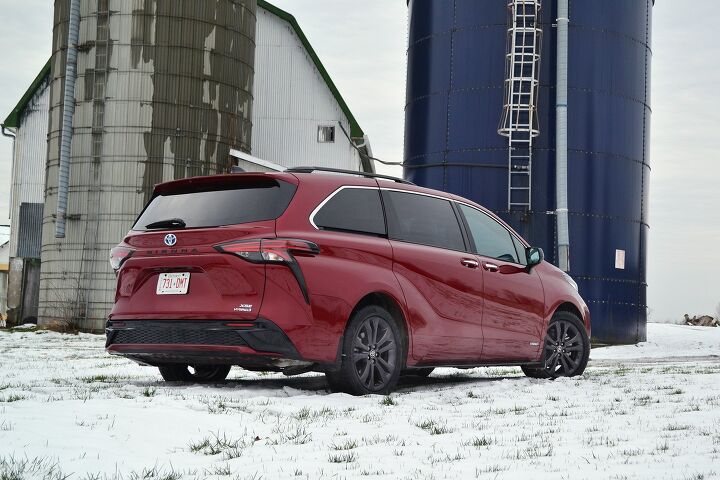

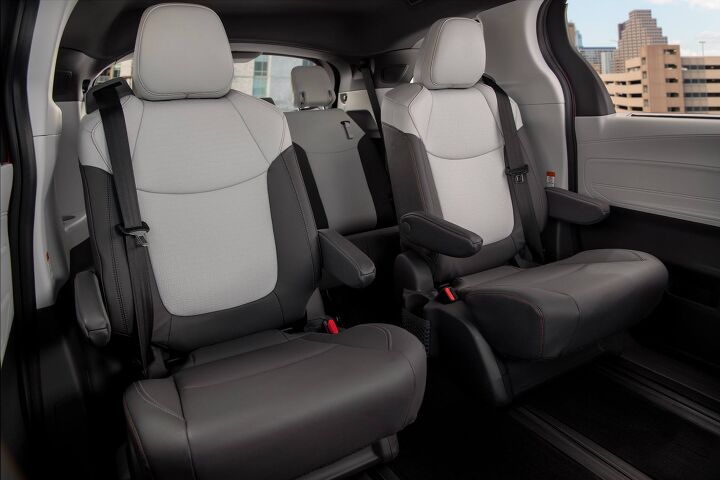















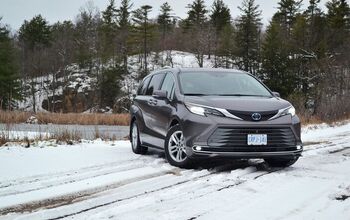
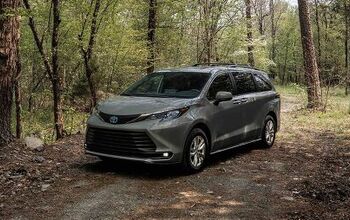

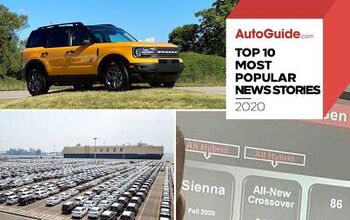



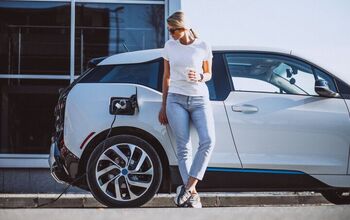
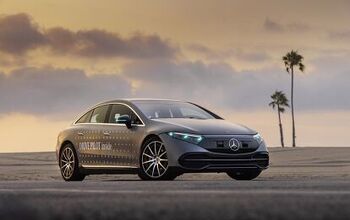




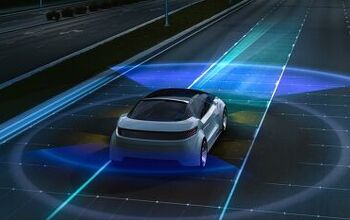
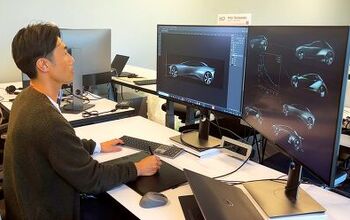
Comments
Join the conversation